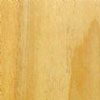Poplar (Tulip)

| Wood type | Hardwood |
| Environmental | Not listed in CITES. Believed available from well-managed sources. Check certification status with suppliers. |
| Introduction | Note: the recommended name for this timber in the UK is American yellow poplar. There are other, unrelated species which are also called tulipwood. |
| Distribution | Eastern USA and Canada. |
| The Tree | A large tree attaining a height of 37m or more, and a diameter of 2m or more. |
| The Timber | The sapwood is white, and in second-growth trees, very wide; the heartwood is variable in colour, ranging from olive green to yellow or brown, and may be streaked with steel-blue. The annual growth terminates in a white band of parenchyma giving a subdued figure to longitudinal surfaces. The wood is’ straight-grained. fine-textured, fairly soft and light in weight about 510 kg/m3 when dried. |
| Drying | Dries easily and well, with little degrade. |
| Strength | Similar to idigbo (Terminalia ivorensis) in general strength properties. |
| Working Qualities | Good – Good |
| Durability | Slightly durable |
| Moisture Movement |
Medium |
| Density (mean, Kg/m³) |
510 |
| Texture | Fine |
| Availability | Limited |
| Price | Medium |
| Use(s) | Interior joinery, Furniture |
| Colour(s) | Yellow brown |
